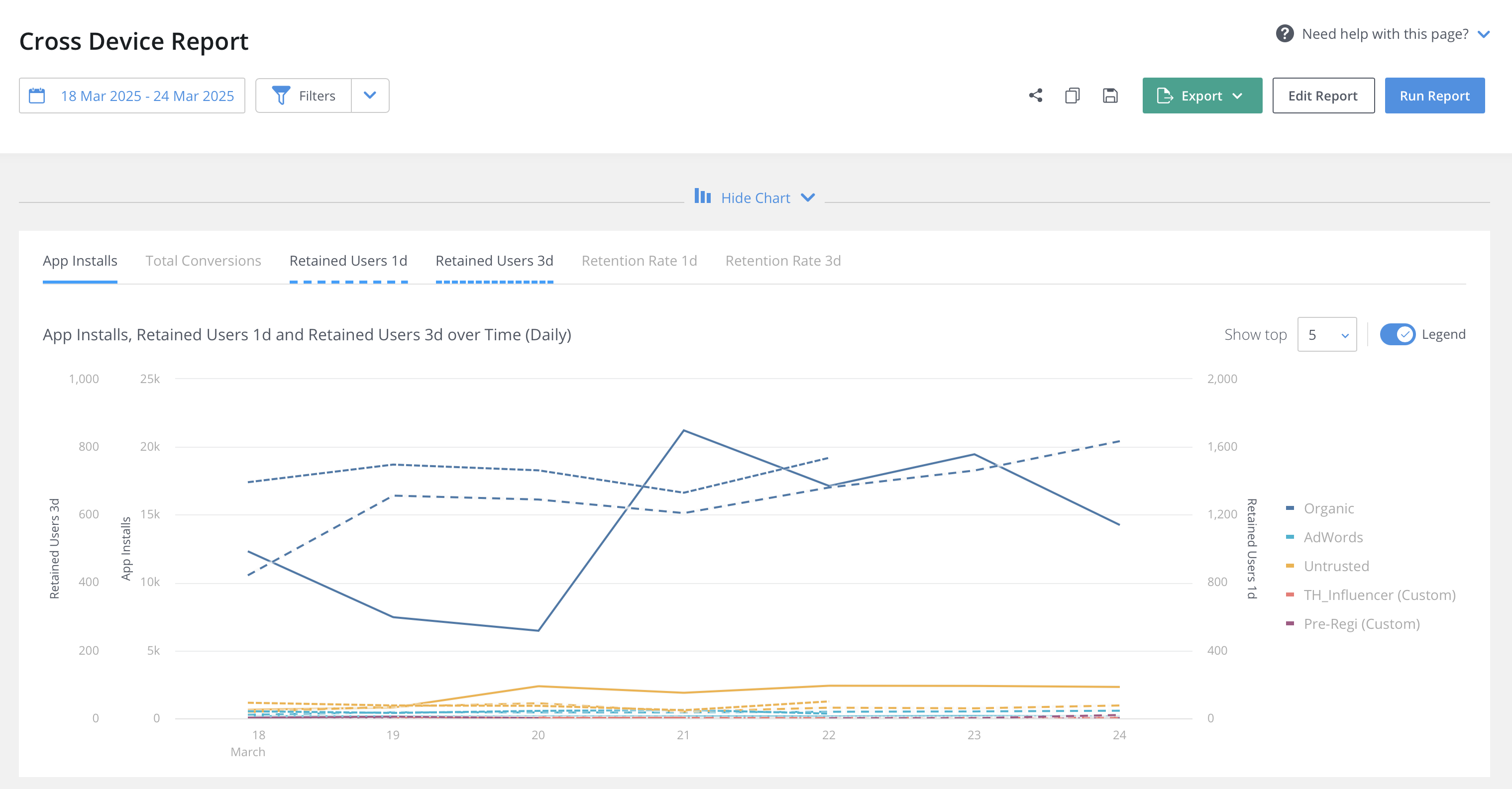Content
Stay up to date on the latest happenings in digital marketing
Cross-device retention is now a standard part of Singular’s cross-device attribution solution and available to all Singular customers. It’s an essential part of fully understanding your ROAS, LTV, and customer journey.
Cross-device retention: so many devices
The average US household has over 17 connected devices. I personally calculated my own number at north of 50 about a year ago, though I’m probably an outlier. In 5 years, the number of devices owned by the average American jumped 63%, and the average European 68%.
That’s tablets, phones, smart TVs, and yes … good old-fashioned laptops and PCs.
Not shockingly, we use a lot of those devices.
Two thirds of shoppers use multiple devices in succession while considering online purchases and 40% of online transactions involve multiple devices. I know I like to see products on a bigger screen even if I’m mid-transaction with my phone.
Even in mobile gaming, we see a massive increase in web2app journeys for multiple reasons, including better data accessibility and higher monetization.
And even when that web2app journey happens on the very same device, you need marketing connective tissue like deep links and cross-device attribution to connect all the dots, fully understand user journeys, and be able to accurately calculate ROAS, LTV, and retention.
The cross-device scenario you see every day
Cross-device retention gives you better insight on what’s actually happening. Because this is a fairly common scenario:
- You acquire a new user on the web on PC (or console, or CTV)
- At some point, they start using your mobile app
- Around the same time, their web/PC use drops off
- Your analytics goes \_(ツ)_/
In a legacy attribution solution, something bad happened. According to an old-school marketing measurement solution, you acquired a user who stayed for a while and then churned … maybe even before generating enough revenue to cover your customer acquisition cost.
In that same legacy scenario, a totally new organic user magically popped up in your app.
With cross-device retention, you know much better.

With cross-device retention, you know that you did a great job of acquiring that new user, customer, or player on the web. And that you did a great job of making that person a multi-platform user: someone you can engage with and provide services for via multiple channels. You also know that the CAC for the initial acquisition wasn’t wasted, but is actually being continually monetized on an ongoing basis on a new platform.
Which makes your ROAS and LTV numbers look better and be more accurate at the very same time: a very nice combination.
Plus, as an extra cherry on top, both of those newly-more-accurate metrics now provide better insight into smarter campaign optimization for the future.
Win, win, win.
How Singular’s cross-device retention works
Singular’s cross-device retention works at the user level, not the device level. It counts users across different devices, and calculates retained users across all the different devices they use. Singular then calculates your retention rate as retained users devices by total conversions in your campaigns.
Simple, obvious, expected?
Sure, but it requires the magic of cross-device retention to function.
Both retained users and your more accurate cross-device retention rate are cohorted metrics, so you see them in a cohort view by campaign.

Every Singular client who is using cross-device attribution has immediate access to this feature, and the data is retroactive to March 20.
In other words, it’s simple, built-in, on by default, and available to all right now.
Cross-device retention: essential for marketers
Of course your back-end systems ultimately have the best insight on what happened: a user onboarded in 1 platform and transitioned to another, and maybe bounces around a bit here and there between devices.
But without cross-device retention, your marketing and advertising analytics don’t.
That’s a problem, because you’ll never have accurate ROAS or LTV. You’ll never see the full customer journey, and you’ll have bad data driving future optimization decisions. That means it’s more likely that you’ll accidentally optimize the wrong campaigns for the wrong reasons, and maybe even drop channels that are actually profitable but don’t appear that way in your analytics.
Cross-device retention ensures that your marketing analytics more accurately reflect your product and user reality, regardless of exactly how people choose to use your product, where they decide to onboard, or how you managed to attract them in the first place.
Ultimately, it’s 1 less thing for you to worry about, and it’s better data for everything you do.



